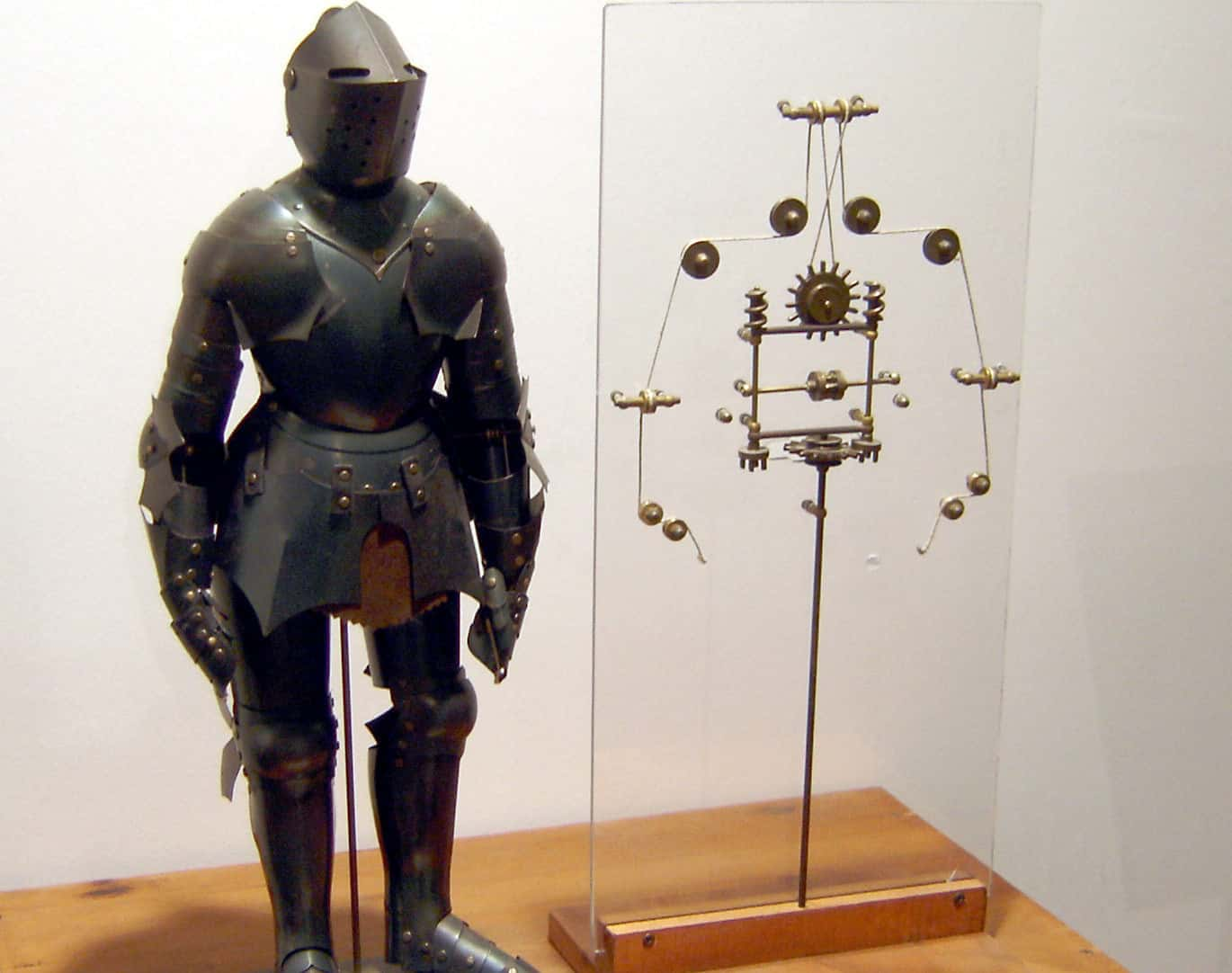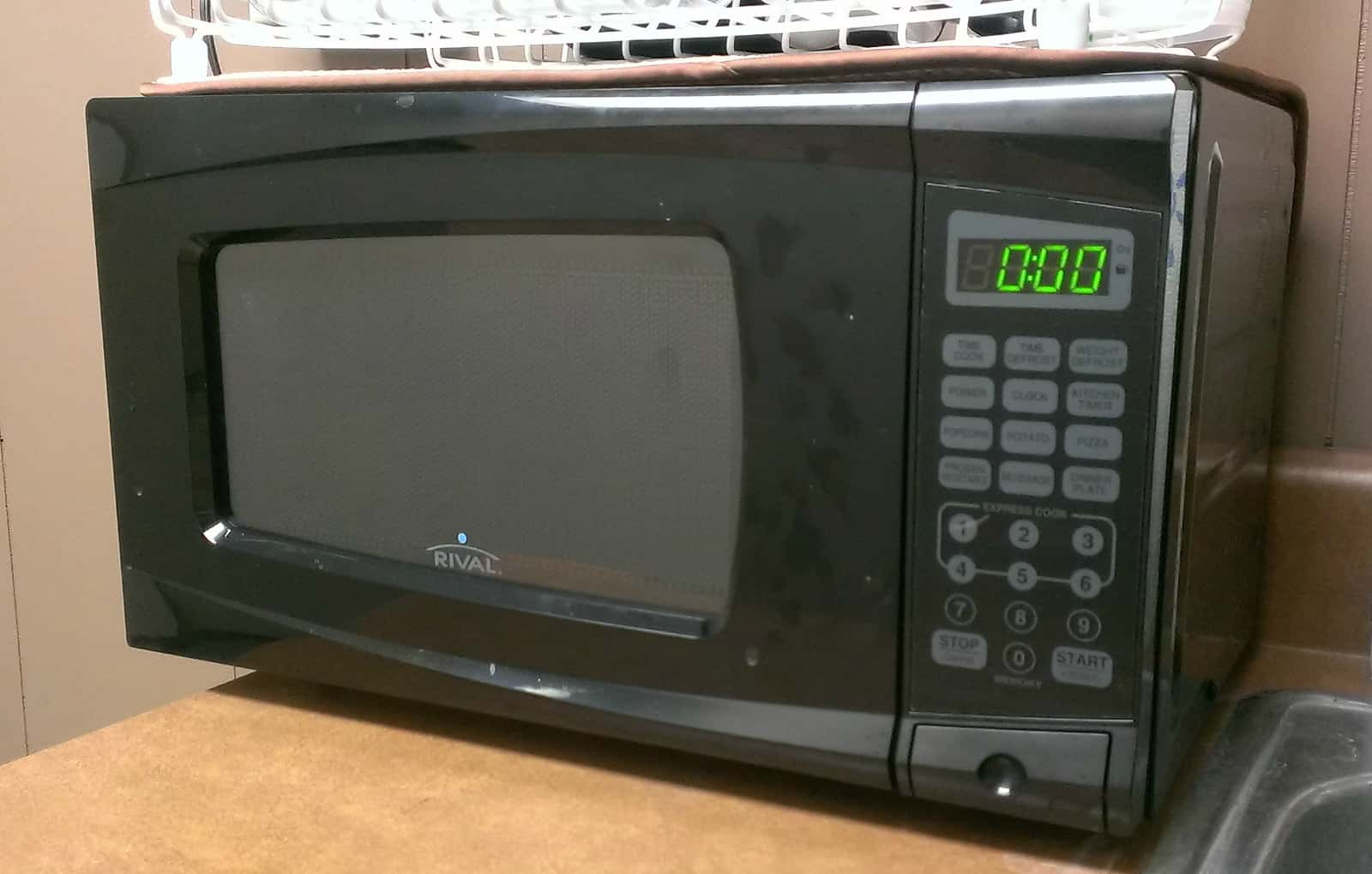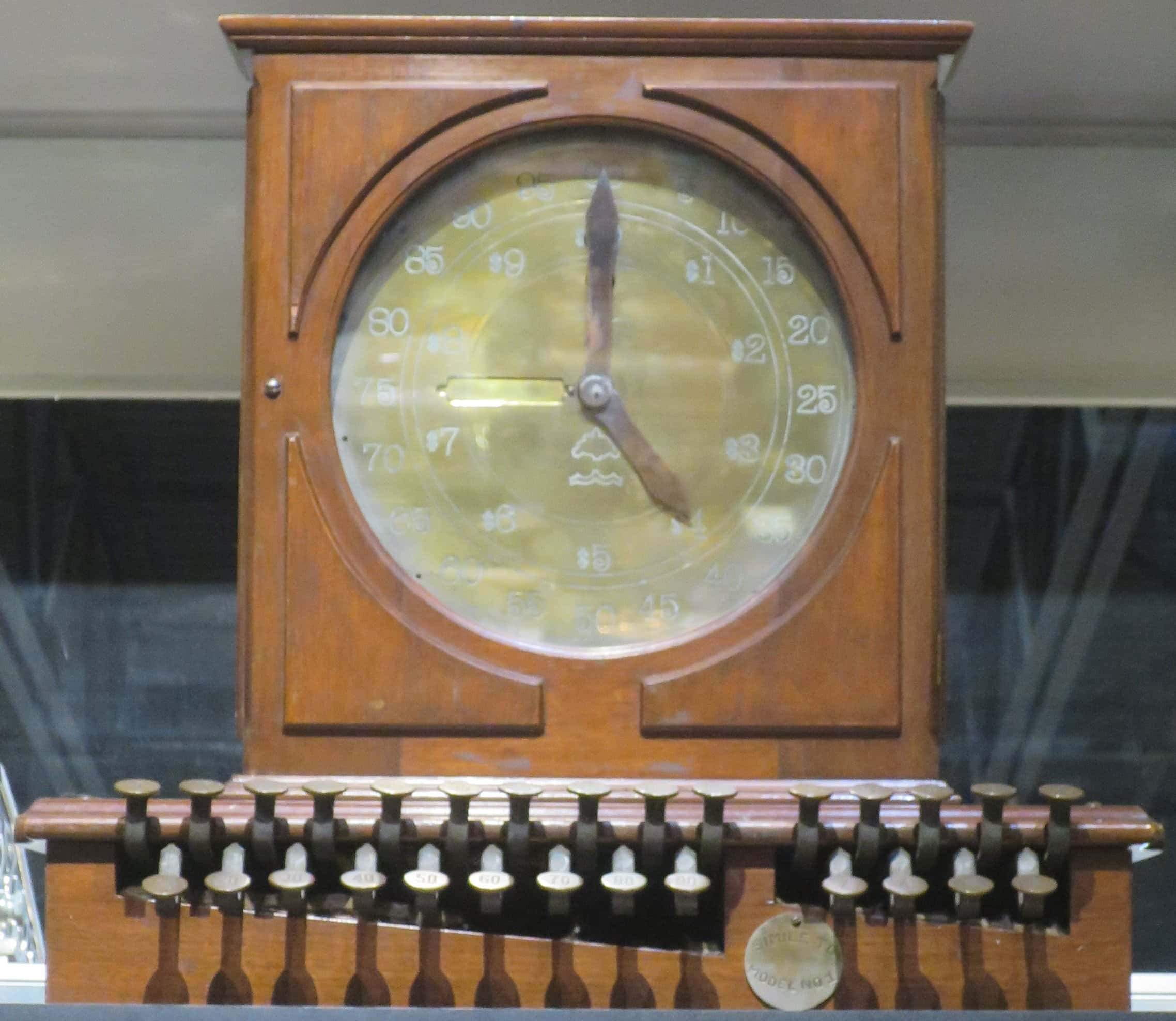“When technological advancement can go up so exponentially, I do think there's a risk of losing sight of the fact that tech should serve humanity, not the other way around".—Tim Cook
What would the world be without escalators, potato chips, or tampons? Thank goodness for technological breakthroughs. We’ve grown up on this idea of “breakthroughs” as the product of a singular genius inventor, perhaps a man in a lab coat who mixes chemicals or fiddles with bolts until he achieves his “Eureka!” moment. The truth, however, is much more complicated.
From explosive innovations to the tools that just didn’t work, the history of invention is rich with stories of success, failure, and failures that were repurposed into success. Sometimes breakthroughs happen in a lab—other times it’s a kitchen, a carnival, or even on the way to the French king’s mistress. Put on the inventor's goggles and delve into 42 interesting fun facts about technological breakthroughs in history.
1. Putting The "Hanky" In "Hanky-Panky"
In 1910, Mary Phelps Jacob said “Balderdash!” to her corset and told her chaperone to bring her two handkerchiefs, some thread, and a needle. Phelps then promptly stitched the hankies together. With a few movements of the needle, a woman's chest found a new support in the form of the first brassiere, resulting in a sigh of relief resonating across the world. We mean that literally, as women's ribs and lungs were no longer subjected to the compression of corsets.

2. More Rooms With a View
As of 2018, doorknobs are only 140 years old. Osbourn Dorsey did not file the patent for his now-omnipresent household object until 1878. In the Middle Ages, Europeans had been accustomed to living in one big living space, but around the time of the Renaissance, the palaces that were built were split into smaller rooms, which had decorative hangings between them, or primitive doors with various kinds of latches. Then, in the 19th century, multiple patents for different types of doorknobs were filed, with perhaps Dorsey’s being the most well-known, and they’ve stuck around ever since.
3. No One Does It Alone
We all remember Jonas Salk, the selfless inventor who, in 1952, donated his polio vaccine to the public domain. However, he was not the first to succeed. Two years prior, other researchers like Hilary Koprowski had already developed an orally-administered version of the polio vaccine with a "live" virus; Salk formulated the version of the vaccine that contained an "inactivated" sample. In fact, it was Albert Sabin’s updated version of this oral, “live” virus vaccine that would supplant Salk’s version in most of the world after just a few years. Absolutely no disrespect to Salk, whose vaccine was the first to be administered in massive trials, but it’s important to remember technological progress never happens in a vacuum—we’re all in this together.
4. Dark Side of the Rye
The first electric toaster was called the “Eclipse Toaster,” but its 1909 US reinvention for the home had a hard time living up to its progenitor’s all-encompassing name. The device could only toast one side of the bread at a time, and someone had to be on “duty” to manually turn it off.
5. What a Relief
Leonard Da Vinci intended to integrate 15th century naval combat with scuba espionage. The Italian inventor designed a Renaissance scuba suit featuring a convenient private pouch where service members could "relieve" themselves. They could also use these pee pockets to keep their bodies warm when underwater. Efficient!
6. Renaissance Drones
Fortunately or unfortunately, depending on who you ask, there is no concrete evidence that the robot army featured in Leonardo da Vinci’s workbooks made it past the sketch phase. Nonetheless, these bots were remarkably complex. If they had been successfully built, da Vinci would have cut down on Italy’s human mercenary budget, even if his robots were, as some have suggested, intended to be metallic decoys rather than walking, talking T-100s.
7. Feel the Burn
When you think "heat rays," you may associate them with high-tech supervillains or surgeons. However, early forms of laser-focused heat apparatus have been in existence since before 400 BCE. For centuries, humans have polished surfaces to focus sunlight on wounds, or to start fires for the heck of it. The most significant advancement for heat rays, however, occurred in 212 BCE, when Archimedes incinerated whole enemy ships off the coast of Syracuse by utilizing those early polish-and-burn techniques on a large scale.
8. Forgotten Fruit
Apple Inc. built their brand on the attractive story of Sir Isaac Newton’s “breakthrough” moment under the apple tree. The first Apple logos were not of that iconic bitten apple, but instead featured Newton sitting under that fateful tree with the apple just about to conk him over his genius head.
9. Accepted With Revisions
In 2017, scientists finally showed off “CRISPR,” a gene-editing technology that can revise human genetic material from inside the body. It’s still in the trial stages, but if successful, CRISPR could be used for things like administering a gel inside of human cervixes to prevent the spread of HPV infection and tumors.
10. Headless and Shoulders
The “shower hood” was a 1970s shower cap that allowed you keep your hair and makeup intact, all while keeping clean. Unfortunately, the invention did not take off, maybe because people like washing their hair, or maybe because it kind of seems like a possible cause of asphyxiation. Staying alive throughout your whole shower is kind of an important part of the process.
11. Bad Hygiene Never Tasted So Sweet
Not washing your hands before dinner pays offs: in 1879, Constantin Fahlberg left the lab after a long day of studying coal tar derivatives. That night, his dinner tasted especially sweet. Turns out, he had spilled a chemical compound of his hand that had transferred to his food. Fahlberg would come to patent this zero-calorie concoction as “saccharin".
12. Melt into You
In 1946, Raytheon engineer Percy Spencer was struck by success and tragedy. On one hand, he accidentally set the stage for the invention of the microwave, after standing next to a device while searching for alternate uses of magnetron. On the downside, he figured it out after the device melted the chocolate bar in his pocket.
13. Hard & Hearty
The medication was initially developed to treat hypertension and chest pain in men. Unfortunately, the little blue pill was better at giving the trial subjects erections than it ever was at treating heart disease. Failure didn’t stop the scientists, and the treatment was promptly marketed as a bedroom enhancer.
 Wikimedia Commons, allen watkin
Wikimedia Commons, allen watkin
14. The Sweet Taste of Failure
What’s a scientist to do when their chicle-based (a type of tree sap) substitute for rubber keeps failing? Put it in your mouth. That’s what inventor Thomas Adams did in 1870, and it turns out that his failure didn’t taste bad at all. He loved it. Thus, chewing gum was born.
15. Playtime Is Profit Time
People kept trying to replace rubber with new substances, and it rarely worked as intended. Take the invention of Silly Putty, which was General Electric engineer Hames Wright’s attempt to combine silicon and oil with boric acid. The intent was to give the WWII initiative some cheap alternative to rubber. The material wasn't suitable for combat boots, but his fellow scientists greatly enjoyed playing with the rubbery substance like children. Unsurprisingly, this rubber was quickly advertised and sold as a toy.
16. Purple Fever
Without malaria, we might never have gotten the color “mauve". In 1856, William Perkin was attempting to develop a cure for the disease when, instead, he invented this distinct shade of purple-pink. Perkin promptly ditched the whole “ridding the world of a deadly disease” idea to enter the sexier, more lucrative world of synthetic dyes.
17. Dr. Touch-Me-Not
If Dr. Rene Theophile Hyacinthe Laënnec had been a little less squeamish about touching girls, we might never have stethoscope. For years, doctors got by on simply tapping their patient’s chest in order figure out what was going on inside. However, Laënnec was very hesitant to do this with a young lady patient. Thus, instead of putting his manly hands on her chest, he listened to her heart via a rolled-up tube of paper. With his diagnosis being surprisingly accurate, Laënnec indirectly laid the ground for more advanced, less paper-based stethoscope technologies.
18. Sticking Together
In 1920, Band-Aids were invented by a humble cotton buyer whose his wife was remarkably clumsy and wouldn’t stop needing bandages. To save her from infection, Earle Dickson made a quick fix by attaching two pieces of gauze onto each other with an adhesive. The result was a quick and easy patch job that could protect the wounds of clumsy people the world over.
19. No Wives, Buttons, or Worries
The first T-shirts were made and geared to bachelors. In 1904, a single man was usually a man without anyone to sew his button-up shirts. Thus, the T-shirt provided a simple alternative that did not need mending or button replacements—perfect for the perpetual bachelor with no wife or home economics skills.
20. Ball Before All
What came first, the computer mouse or the computer mouse ball? The trackball that computer users all know and love was in development as a secret government initiative for more than a decade before the mouse itself was even a thing!
21. Light Aesthetic
Some of the earliest prototypes for the first 20th century flashlight torches included light-up stick pins and glowing flowerpots. Who says nighttime visibility needs to have just one function?
22. Stairway to Heaven
The first escalators were actually installed in 1896 as carnival rides. Jesse W. Reno’s original plan was to transport people via conveyor belt, as opposed to the staircase version that would come to adorn our favorite shopping malls.
23. Shake, Bake, & Pay Up
If you’ve ever owed payment for a parking ticket, Oklahoma City newspaper salesman by the name of Carl C. Magee is to (indirectly) blame. Magee designed the world’s first parking meters in 1932, and his designs more resembled loaves of bread upon poles than the intimidating boxes we’ve come to know and love. Imagine coughing up dough to a clump of dough!
24. Doorway to Success
You heard it here, folks: the invention of the revolving door is as officially as important to technological progress as radiation and airplanes. Theophilus van Kannel won the John Scot Medal for his contribution to society: the invention of the revolving door. This centrifugal portal put van Kannel in the same ranks of Marie Curie, Thomas Edison, and the Wright brothers, much to the consternation of anyone who has ever gotten the back of their coat or their bag caught in one.
25. A Slice of Slight
Is there anything greater than spite-fueled innovation? Take how chef George Crum’s invention of the potato chip started out as a culinary middle finger to a fickle customer, who was consistently disappointed with the thickness of Crum’s French fries. After the picky eater refused fry after fry, Crum finally sent him some comically thin, fried slices of potatoes. These proto-potato chips turned out to be a hit, and junk food was never the same again.
26. A Coke Day Keeps Something Away
Coca-Cola began its life as a medical remedy, or “temperance” drink.Indeed, the original recipe did include traces of coca tree derivatives, kept at minimal levels so the patent holders could maintain rights to the Coca-Cola name.
27. You Can’t Invent Trust Like This
The patent for the first mechanical cash register was filed as “Ritty’s Incorruptible Cashier". Its intent was to prevent sticky-fingered employees from pocketing cash themselves, hence the “Incorruptible” part.
28. Quack Inventions
Duct tape derived its name from its shorthand during WWII: “duck tape,” for its handy, waterproof capabilities. After the period of conflict, the tape, initially army green, started being used in regular households and changed its color to silver to blend with the ducts of an average home. Thus, a complicated name was born.
29. Cut the Cut?
Sir Tim Berners-Lee, one of the pioneers of the World Wide Web, admits to the essentially pointless nature of the double forward symbol ("//") that is seen at the start of every URL. I’m not mad at him; I’m mad at whoever invented the backslash and complicated the whole process.
30. Better Pray It’s Not Dry Clean Only
When marketing his invention, Papermate ballpoint pen, Patrick J. Frawley encouraged vandalism as a sales tactic. Kind of. Frawley ordered his sales team to simply elbow their way into potential buyers’ stores and use the pen to scribble on their shirts. If the ink didn’t wash out, the salesmen would replace the ruined shirts. Of course, the ink did wash out, and the Papermate pen was a success. Still, we would not recommend borderline assault as a marketing tactic for anything else.
31. Wrap It Up
One of the first edible ice cream cones was the result of neighborly help and waffles. When the ice cream vendor next to Ernst Hamwi found himself out of paper cups at the 1904 World’s Fair, Hamwi, a waffle vendor, stepped in. He rolled his waffles into cones to act as impromptu ice cream holders. People loved the idea of a container they could eat, and a beautiful summer tradition was born.
32. Jigsaw Wants Tomato Sauce
The first can openers looked less like household appliances and more like contraptions out of a Saw film. Ezra Warner’s 1858 model held the can together with a bayonet, and users applied a sickle to cut the edges. As a result, early adopters were straight up too scared to use them without professional help, and they often enlisted shopkeepers to pre-open the cans while they were still in the grocery.
33. White Yourself Out of a Job
Surprising few people, the inventor of liquid white-out was a typist. This office supply lifesaver was originally called “Mistake Out” when developed by Bette Nesmith Graham in her kitchen blender. Nesmith Graham was actually fired from her job because she spent too much time distributing the product to her co-workers. And yes, she was the mother of The Monkee’s Michael Nesmith.
34. Flare and Unfair
The colored flare system was the invention of Martha Cotton—a 21-year old widowed mother of four children in 1847. Obviously, none of this was an ideal position to find oneself. Nonetheless, she improved upon the notes of her late husband’s plans for a flare system that would allow ships to communicate in the darkness. After 10 years of hard work, Cotton finally perfected her husband’s system…only for the US Navy to stiff her on the bill—she was paid only $15,000 of the owed $120,000, probably because she was a woman in the 19th century.
35. Don’t Miss This Miss
Without Admiral Grace Murray Hopper, your computer would probably have no idea what you’re saying. In the 1950s, this Ivy League-graduate computer programmer invented the systems that would translate English into computer code. Thanks to Hopper a generation of programmers would have an easier, and more accurate, way to code. For her lifetime of service, the US government named a warship after her.
36. What Hasn’t Adultery Given Our Culture?
The elevator has a sexy backstory. The first of its kind was installed in 1743 for King Louis XV of France. The king’s mistress was housed on the second floor of Versailles, and this device was mostly a discreet means of transport for when the king needed a royal lift in spirits from his sidepiece. The king even employed men whose job it was to stay inside the chimney and manage the elevator’s pulleys whenever the occasion arose. You should also know this early version went by the much cooler name of “The Flying Chair". Why did we drop that?
37. Can’t Stop the Music
Ironically (or not), the karaoke machine was invented by a tone-deaf man named Daisuke Inoue. He also can’t read musical notation. On top of that, he failed to patent his invention, so he’s never received money for his contribution to party music culture.
38. Immortal Robot-O
Few public figures put their stock in immortality as much as Ray Kurzweil. In a 2013 interview, the futurist shared his belief that technology will advance to such a fantastic degree that humans will be essentially immortal in 15 years. His non-fiction book, The Singularity Is Near, even predicts the inevitable complete merging between human life and artificial machine intelligence.
39. A Leap In Fashion
In 1912, Franz Reichelt was excited to show off his invention: a suit that would turn into a parachute. He was so excited, he decided to test it himself by jumping off the Eiffel Tower. Regrettably, the suit got entangled around Reichelt's body as he jumped, leading to his immediate, fatal descent.
40. Can You Feel This?
Where others might have seen a friend with a drug-induced injury, Horace Wells saw innovation waiting to happen. Before nitrous oxide became an important anesthetic in surgery, it was a neat way to liven up a party. Seriously, people would use the gas as a toy because it made them laugh manically. Then, in 1844, a man took too much at a gas sale, began jumping around, and broke his leg. In attendance was Horace Wells, a local dentist who looked at this man who was numb to his own pain, and realized the potential of laughing gas as knock-out gas.
41. Private Innovation
The modern tampon has a pretty simple, if crude, origin story. In 1929, Dr. Earle Hass was on a trip to California with a female friend, who told him about her homemade alternative to the bulky maxi pads of yore: simply stick a piece of sponge inside instead of having a cloth hanging out outside. That doesn’t seem like such a breakthrough until you remember that the sponge should be, um, as clean as possible to avoid infection. Adding a special plastic applicator tube and string, Hass officially patented his “catamenial device” in 1931 (“catamenial” is derived from Greek for “monthly).
42. Go Out With a Bang
Gunpowder was first concocted to save lives, not take them. In a quest for an “immortality” elixir, ancient Chinese alchemists mixed together potassium nitrate, charcoal, and sulfur…only to discover their life-expanding brew was life-endingly explosive. Determined not to be restrained, they transformed adversity into an imposing weapon; subsequently, the gunpowder was used for fireworks and armed conflict.
Sources: 1, 2, 3, 4, 5, 6, 7, 8, 9, 10, 11, 12, 13, 14, 15, 16, 17, 18, 19, 20, 21, 22, 23, 24, 25, 26


















































